

I wanted to get a hood on the car so we started with the original steel piece that had been in really good shape until the guy media blasting it damaged it. I'd told him to do just the structure on the bottom side and to stay away from the skin itself. But do you think he listened? Warp city... I stuffed it in the corner years ago and now figured I had nothing to lose by cutting it up.
First step was to take measurements and transfer them in tape over to the hood. The engine sits off to the passenger side, so don't expect the hole to be centered.
I kept the outline generous, opting not to follow every little detail around the blower.
Once reasonably satisfied, I cut the skin and inner structure, then test fit it.
First step was to take measurements and transfer them in tape over to the hood. The engine sits off to the passenger side, so don't expect the hole to be centered.
I kept the outline generous, opting not to follow every little detail around the blower.
Once reasonably satisfied, I cut the skin and inner structure, then test fit it.
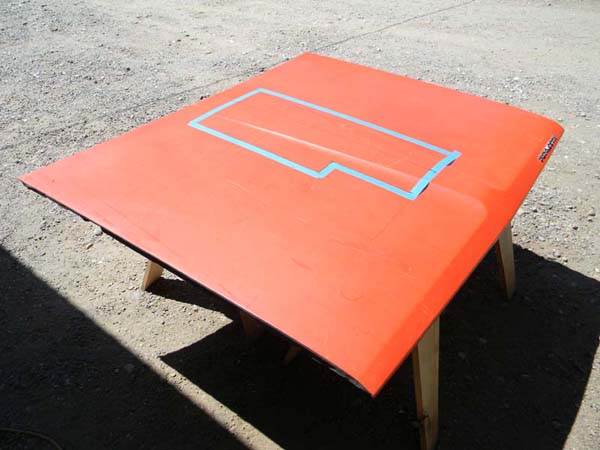
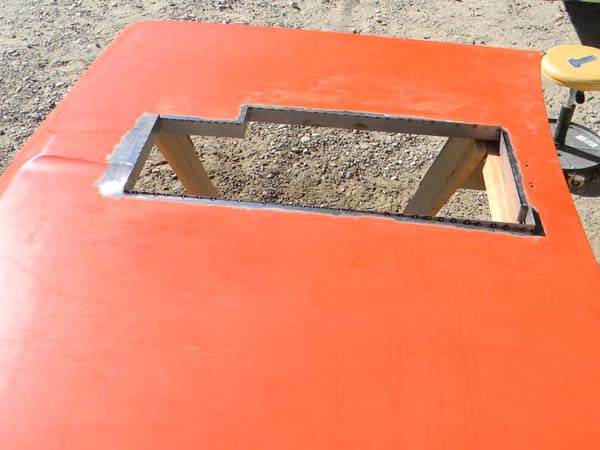
We determined we needed to remove a little material in a couple of corners including a notch at the rear for the throttle linkage and decided to actually add a strip of the hood skin back in across the front for looks.
1.5" wide strips of 20ga sheet metal were cut and/or bent to fit around the perimeter of the opening and tacked in place. They need to be wide enough to allow for the crown in the hood. Excess was removed later.
The fun part was lots and lots and lots of stitch welding and grinding - all the while trying to keep heat and warpage under control.
1.5" wide strips of 20ga sheet metal were cut and/or bent to fit around the perimeter of the opening and tacked in place. They need to be wide enough to allow for the crown in the hood. Excess was removed later.
The fun part was lots and lots and lots of stitch welding and grinding - all the while trying to keep heat and warpage under control.
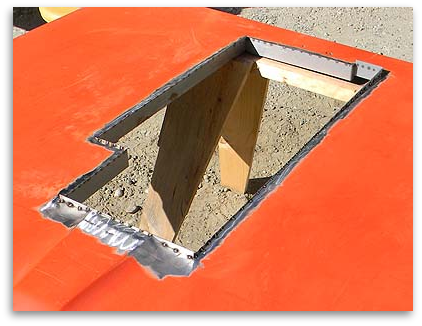
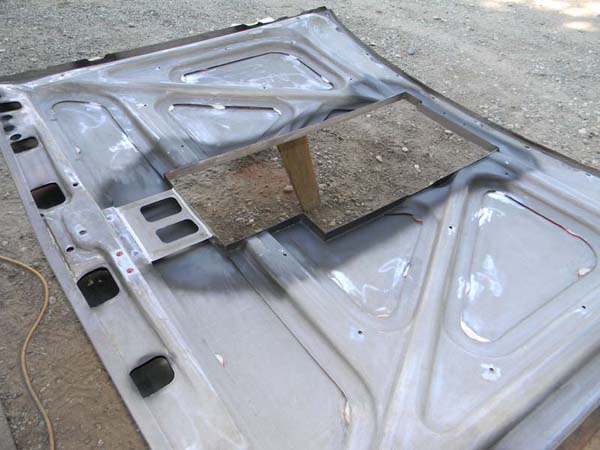
Several broken bonds between the hood skin and structure were repaired using Lord Fusor #129. This is a two part product that sets quickly and looks like the original stuff. I used the same material to "seam seal" the new joints around the opening. Not only does it work well as a sealer but dressed the welds nicely.
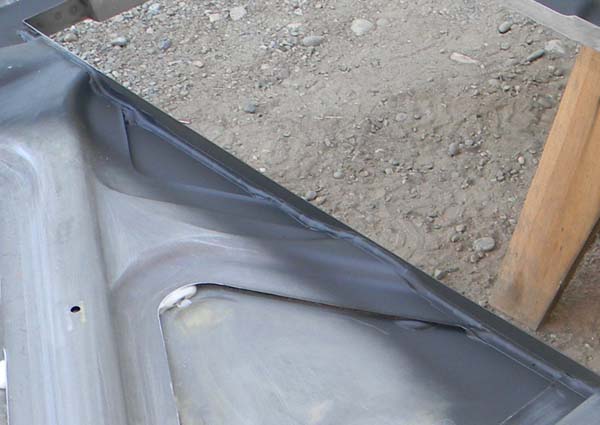
Spot primer covers the seam sealer in these pics.
The inner structure hung low in four spots where it meets the hole. It's difficult to see in the photo below, but it was modified to blend into the finished opening by slicing the structure, bending and folding it downward, and then welding the cuts closed. A little grinding and finishing and they look good.
The inner structure hung low in four spots where it meets the hole. It's difficult to see in the photo below, but it was modified to blend into the finished opening by slicing the structure, bending and folding it downward, and then welding the cuts closed. A little grinding and finishing and they look good.


Filled, primed, and blocked, it's just about ready for a matte black finish.
The two small holes at the rear are for the relocated gauge pods.
The two small holes at the rear are for the relocated gauge pods.

I didn't want to mount the relocated boost and fuel pressure gauges on the cowl so they now sit at the rear of the hood opening. There are no vibration issues with the fuel gauge.
The paint was a single stage special blend to get the desired level of sheen.
The paint was a single stage special blend to get the desired level of sheen.
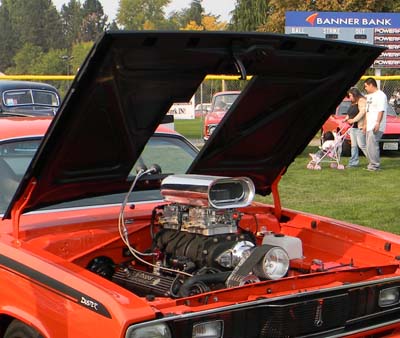
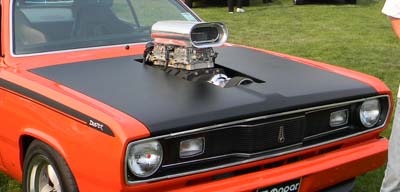
I'm happy to report that the modified (lighter) hood springs I was using with the fiberglass 6-pack hood are still strong enough to support the steel hood!
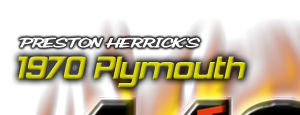 |
 |
 |
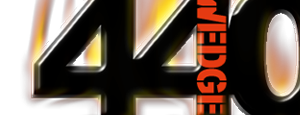 |
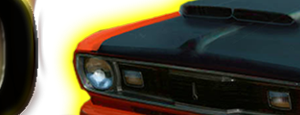 |
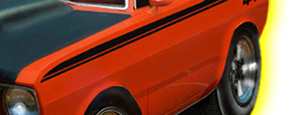 |
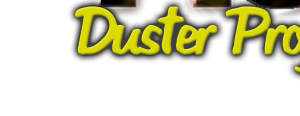 |
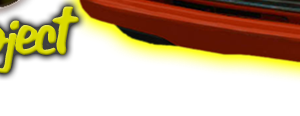 |
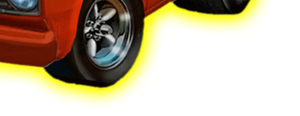 |
© 2013 JP Herrick Enterprises - All Rights Reserved
Site updated: January 2014

